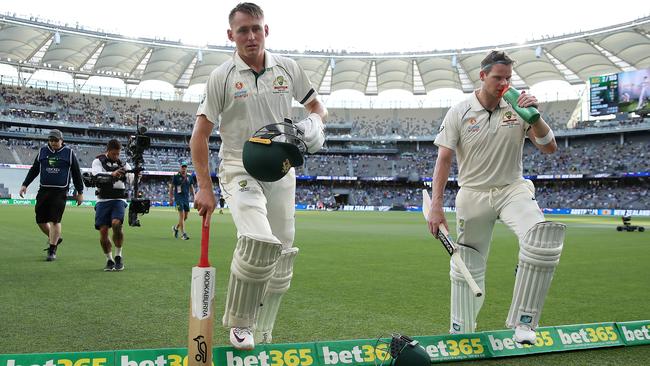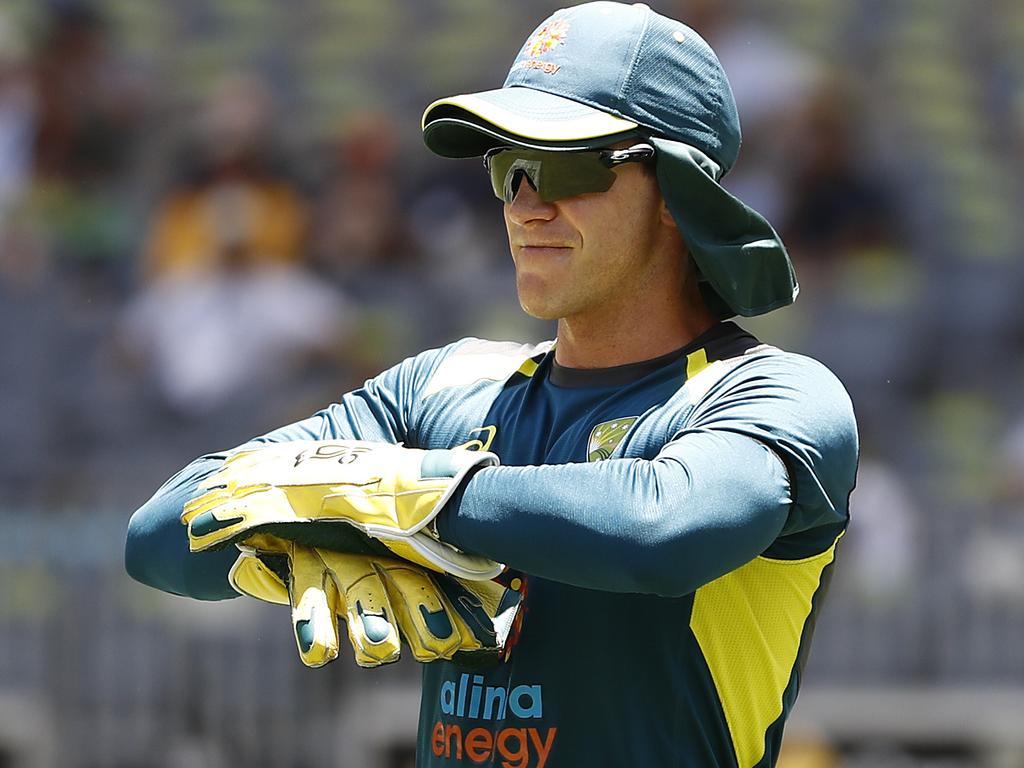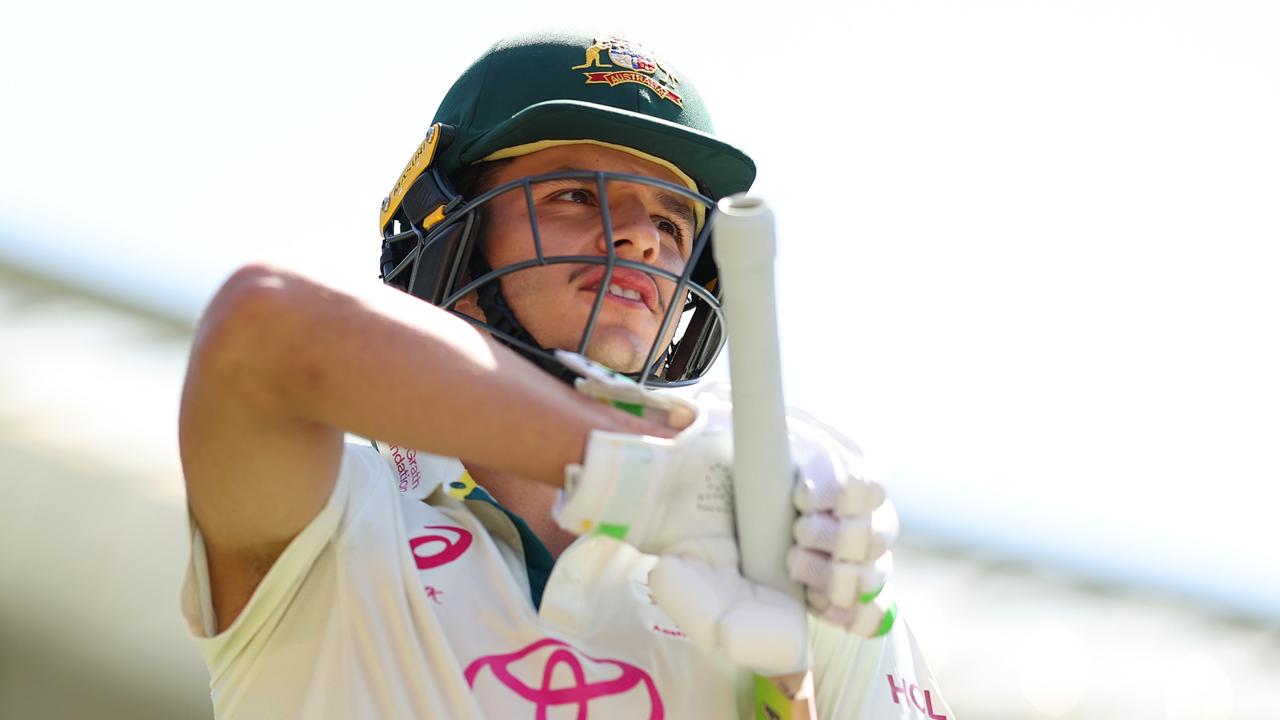Australia v New Zealand: Little brother Marnus Labuschagne rises
At times these days, when looking out the corner of one’s eye, it’s possible to mistake Marnus Labuschagne and Steve Smith.

Not, however, on Thursday in Perth. It was a day when Smith discernably struggled, like a man distracted by a vexing brain teaser. In the 71st Test of his storied career, Australia’s premier batsman was a laboured 19 from 88 deliveries when gifted a second chance at slip, a downright torpid 43 from 164 balls when snaffled at leg gully. Rarely has he been so introspective, so overshadowed.
That’s because, in the 12th Test of his burgeoning career, Labuschagne gave no chance while scoring at almost twice the rate. Such is his intensity and control at the moment that almost every stroke seems to be a sort of event. With a sweet glance to the boundary off Colin de Grandhomme, he raised a 100 partnership with Smith; with fours from a late cut and a pull shot off Wagner he reached 1000 runs in Test cricket; with a reverberating six off Santner over mid-on he reached his third Test hundred in three attempts.
The last stroke was almost an indulgence — only his second Test six, executed with the glee of a child blowing out the candles on their birthday cake. That apart, Labuschagne summed the situation up like a 10-year veteran, holding eager opponents at bay.
New Zealand hung in worthily all day. Wagner’s music is said to be better than it sounds; Neil Wagner’s bowling is better than it looks, as it were. He is not especially quick. He does not do a great deal with the ball. But his record is a tribute to his perseverance and pluck: more Test wickets than Pat Cummins at a cheaper cost than Mitchell Starc and a better strike rate than Josh Hazlewood.
Amid New Zealand’s politely unobtrusive rise to number two in the world Test rankings, the fair-haired 33-year-old has bounced and bustled his way to number four in the world Test bowling rankings, displaying a cheerful knack of taking timely wickets — none more so than on Thursday at Perth Stadium.
Early in the day, it had looked like a mere continuation of David Warner’s summer pageant. He took a short single into the off side from the first ball of the Test as though he had not stopped running since Adelaide. His first four was all-run, a cuff through the covers that retrievers arrested before the boundary, to no net avail. His second was flailed through the covers so conclusively that neither batsman had to move. He appeared to have no intention of going elsewhere. When Warner went 12 deliveries without scoring a run, it was like hearing a car revving in a garage.
With 10 minutes to the main break, Warner was nearing the 1000th ball he has faced this international season, only two of which had dismissed him in between the accumulation of more than 800 runs. Having passed one totemic Bradman total in Adelaide, 334, he was within sight of another, 6996.
The fourth ball of Wagner’s second spell then came as a genuine surprise, perhaps as much to bowler as batsman — a low full toss that Warner neither quite defended nor attacked. Wagner has a long follow-through. He rolls down the pitch like a boulder. Now, with the momentum carrying him forward, he took a low return catch one-handed, having the good grace to look slightly surprised by his unsuspected agility.
To that point, the Black Caps had had little to cheer them. The loss of Trent Boult’s pink ball potential had not been covered by Lockie Ferguson’s extra edge in pace. It took de Grandhomme to arrest Australia’s progress with a stingy spell. He is another cricketer easy to underestimate, his medium pace even less prepossessing than Wagner’s, closer in pace to the likes of Chris Harris and Gavin Larsen than Richard Hadlee; his name seems almost ironic, whimsical. But his teasing outswing heralded maidens, stifled shouts, half-upraised arms and finally a successful lbw appeal against Joe Burns.
After the main break, the pink ball softened, the paint-peeling heat took a toll, Smith rode his luck and Labuschagne the tide in his affairs, but the Australian pair were restricted to 84 in 30 overs in the session. After the short break, Wagner bounced out the non-plussed Smith and Southee hit the top of Matthew Wade’s unprotected off stump, and the naked eye was struggling with something else — who was on top at the end of an intriguing day.






At times these days, when looking out the corner of one’s eye, it’s possible to mistake Marnus Labuschagne and Steve Smith. They exhibit some of the same gestures and jerks between deliveries; their leaving outside off stump has acquired a similarly ornate flourish. Given the amount of time they are alleged to be spending together off the field, extolled at length by their coach, they might almost be merging into the same player.